Your 152. Squadron has been located close to the frontline, so you will be intercepting only single recon planes – said on 31st August 1939 evening colonel Tadeusz Prauss to major Edward Więckowski, who has just came with his III/5 Fighter Wing from base in Wilno to the field aerodrome in Szpondowo near the Prussian border. – So you have pretty easy task. You will probably be fighting against Henschels Hs 126. According to the intelligence data, these appear to be not so fast, pretty poorly armed. None of these experienced pilots did expect, that the war will negatively verify these optimistic prognoses already on its very first day…
In the Army “Modlin”
Plan of mobilization for the conflict with Germany assigned the Więckowski’s III/5 Fighter Wing to the army units defending Poland on the northern border with Eastern Prussia. Wing’s 151. Fighter Squadron, using obsolete PZL P.7a fighters marked with blue condors, became part of the Independent Task Force “Narew” , and the Wing staff with the 152. Squadron equipped with PZL P.11c marked with red condors became air cover for the Army “Modlin”. On 31st August 1939 the Squadrons flew to the frontline airfields. For 152. Squadron it was Szpondowo aerodrome near Płońsk, barely 60 km south from the Polish-German border. Its primary task was defence of the Army “Modlin” concentration area against enemy recon and bombing.
Already on the first war’s day 152. Squadron faced not the expected “not so fast, pretty poorly armed” Henschels, but the most modern Messerchmitts and Heinkels. After misty and cloudy morning, just about the noon the weather became better and better and on the sky over the airfield appeared big formations of the German planes. Polish pilots observed them nervously from the ground, but the order to take off did not come for some hours. Only after 4 p.m. the phone operator from the ground observation network delivered information about spotted air raid aiming on Modlin. Operational order included defence of the fortress and the city using the whole Squadron in three flights: 1st Flight commanded by mjr. Edward Więckowski with st. szer. Mieczysław Popek and kpr. Stanisław Brzeski; 2nd Flight commanded by por. Marian Imiela with plut. Marian Bełc and kpr. Antoni Joda; 3rd Flight commanded by ppor. Anatol Korwin-Piotrowski with ppor. Jan Bury-Burzymski and kpr. Aleksander Popławski. Last of the ten Squadron’s PZLs has been left on the airfield as the reserve. Kpr. Brzeski, member of the Wing’s commander’s flight, remembered:
At the moment of our flight’s start, my ground engineer pointed his finger to the sky. There was a big, stretched formation of bombers. It flew on the high altitude, about 3000 m. I climbed quickly, over Modlin we had 3000 m. too. Unfortunately, we were alone. Por. Imiela’s and ppor. Piotrowski’s flights, spotting the bombers flying over the airfield, chased them immediately.
PZL P.11c No 8.84/6, Underwing No 647/L Flown by CPL Antoni Joda from 152 Squadron, September 1939. Colour profile by Zbyszek Malicki.
Great air battle over Warsaw
As a result 2nd and 3rd flights and st. szer. Popek from 1st flight in combat frenzy have left their Army sector and accidentally joined the great afternoon air battle fought by the Pursuit Brigade against about two hundreds of the Luftwaffe airplanes attacking Warsaw. While the Warsaw Brigade’s squadrons tied in dogfights with escort fighters, pilots from 152. Squadron managed to intercept group of Heinkel bombers near Legionowo and Jabłonna.
German bombers were so fast, that we flew behind them on the full throttles – recalls ppor. Bury-Burzymski – There were some-teen He 111. Piotrowski has attacked immediately. They fought directly in front of me. Both German bomber and Anatol [Piotrowski] scored hits simultaneously. Piotrowski was wounded or his engine died. His „eleven” became steeply gliding. I thought that the pilot is trying to emergency land somewhere near the Balloon Regiment barracks. But he did not manage to. A few Me 109 bounced from the clouds and attacked the damaged airplane. Piotrowski got a series of hits which set his plane on fire. It was the first death of our Squadron’s pilot.
While the German sources do not confirm the loss, pilots of the 152. Squadron and Polish Command credited victory over Heinkel to Piotrowski. Piotrowski himself was most probably shot down by Messerschmitt Bf 109D pair, led by Lt. Fritz Gutezeit from 3./JG21. Gutezeit did not return to the homebase too. After the fight he lost orientation and landed without the fuel near Suwałki in Poland, where he became P.O.W. In this combat also ppor. Bury-Burzymski was credited with victory over Heinkel.
Antoni Joda’s PZL P.11c force landed in Zegrze. Photo from Tomasz Kopański collection
Meanwhile, the only two pilots who have not “got lost” over Modlin, mjr Więckowski and his wingman kpr. Brzeski, performed daring head-on attack against five double-engined airplanes identified as a bombers. Despite getting several hits by the 20 mm cannons, Polish pilots continuously attacked the Germans till they escaped, using the advantage of higher speed. German planes were not bombers, but Messerschmitts from I./ZG1! Polish fighters have been damaged, but managed to repell bigger and stronger group of enemy and safely return to base.
Summary of the first day of fights for 152. Squadron was loss of one pilot (ppor. Korwin-Piotrowski), loss of his airplane and two others, which returned to base but had to be scrapped, and two which needed long-time overhaul. Four other “elevens” had to be repaired, but the engineers did the job overnight and the next day planes were ready for action. Two Heinkels were credited as shot-down (to Korwin-Piotrowski and Bury-Burzymski) and two other as probable shared-kills with the pilots of the Pursuit Brigade, but the German sources do not confirm that. Another result of the day was Command’s order to strictly keep the Army area of operation – “adventure” over Warsaw have costed the Squadron 50% of its airplanes, without any gain for the Army.
More photos of the PZL P.11c wreck on Signal Officers School playground in Zegrze. Photos from dr. Tomasz Kopański collection.
Own bombers and enemy balloons
After somewhat hectic first day of the war came the next days, filled with exhausting service for the Army “Modlin”. Tasks were various: air-cover for infantry moves, escort of the PZL P.23 Karaś bombers attacking tanks of the “Kempf” Panzerdivision near Ciechanów, and even attacks against observation balloons used by Wehrmacht to spot heavy artillery fire (152. Squadron pilots shot two ballons: 3rd September kpr. Brzeski and 4th September ppor. Bury-Burzymski). After 5th September frontline came so close to the unit’s airfield that the Squadron had to be moved several times, limiting the possibility of active actions – for several days only some rec missions were performed. During flight from one airfield to another, the Squadron one day accidentally met German formation and shot down a Messerschmitt Bf 110 from 1./ZG76 (Lt. Helmut Lent hit by por. Woliński or kpr. Popławski) and He 111 from 2./KG1 shot down by por. Imiela or the whole Squadron as a team.
Advertisment
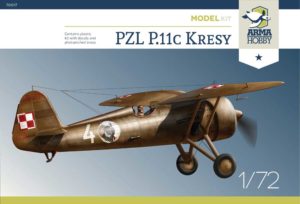 Model of the 70017 PZL P.11c with 152 and 161 borderlands squadrons markings you can find in Arma Hobby shop. Box contains plastic parts, small photoetched fret and a huge decals sheet with markings: 2 x Ltn. Dzwonek, 1 x Volhynia Field Exercisese and 1 x 152 Squadron – Antoni Joda aeroplane.
Model of the 70017 PZL P.11c with 152 and 161 borderlands squadrons markings you can find in Arma Hobby shop. Box contains plastic parts, small photoetched fret and a huge decals sheet with markings: 2 x Ltn. Dzwonek, 1 x Volhynia Field Exercisese and 1 x 152 Squadron – Antoni Joda aeroplane.
Got to shop link
Recon the bridgeheads!
After return to the Army on 10th September one of the ordered missions for the Squadron was rec flight along the Bug and Narew rivers. Such task was maybe not the most distinguishing duty for the fighters, but for the Army Command it was crucial. On 9th September evening units of the German 11.. Infantry Division crossed the Bug river near Brańszczyk and on the night attempted to create another bridgehead near Wyszków. Polish 1. Legions Infantry Division effectively defended the river during the night, but in the morning Germans got the bridgehead. The Squadron has been ordered to check the enemy activity on the undefended sections of the river between Wyszków and Modlin.
Aeroplane devastated by souvenir hunters. Photo from dr. T. Kopański collection.
The task has been assigned to kpr. Antoni Joda, fighter, who already took part in the fights, including the great battle of 1st September. His “PZL” with Squadron’s red condor on the fuselage side was marked with number “6” and underwing code “647 L”. Facing heavy anti-aircraft fire (both enemy and own!) Joda managed to recon whole ordered area. Only near Zegrze his airplane has been hit into the engine and, unable to cross the Narew river, performed forced landing on the football field of Army Signal Cadet School in Zegrze. The pilot most probably set his plane on fire (so the Germans captured only a wreck) and after swimming across the river to the Polish-controlled side, found some bicycle and returned to the unit. At the same day on the evening the Squadron has been again transferred to the rear area in Eastern Poland, to Brześć, then on 12th September to Ostrożec on Volhynia (now Ukraine), and on 14th September – to Litiatyń, where they met their colleagues from the other Wing’s unit: the 151. Fighter Squadron. There were very few operational airplanes, so the surplus pilots have been immediately sent by cars to Romania for Hawker Hurricanes, transported on the ship from Britain to Romanian harbor Constanca (the Hurricanes not reached the destination before fall of Poland). While the rest of the Squadron “worked” till the very end, performing three-plane patrols over Stanisławów, the campaign was effectively over. On 18th September they all flew to Romania, day after invasion of the Red Army.
Kpr. Antoni Joda’s Odyssey
 After reaching France, kpr. pilot Antoni Joda in the end of May 1940 was assigned to 5th Section of the I. Flight in Polish GC 1/145 Squadron equipped with ill-fated Caudron CR.714 fighters. His personal airplane was marked with white “14” on the fin. Polish fighters soon have been relocated to the operational airfield Dreux near Paris. The unit was being scrambled against the enemy air raids by the car horn, after radio messages from the observation post located on the Eiffel Tower in Paris! Despite continuous technical problems with the Caudrons, the Poles in the following days managed to fly, fight and even win, also against Messerschmitts. On 14th June Joda was sent to the operational training on the better Bloch MB 152 fighters to French GC I/1 unit, where his Polish colleagues scored the last Polish victory in French campaign – the He 111 on 18th June shot down by section of kpt. Wczelik, sierż. Markiewicz and French Adj. Delegay. On the following day personnel was evacuated by the ship to Britain.
After reaching France, kpr. pilot Antoni Joda in the end of May 1940 was assigned to 5th Section of the I. Flight in Polish GC 1/145 Squadron equipped with ill-fated Caudron CR.714 fighters. His personal airplane was marked with white “14” on the fin. Polish fighters soon have been relocated to the operational airfield Dreux near Paris. The unit was being scrambled against the enemy air raids by the car horn, after radio messages from the observation post located on the Eiffel Tower in Paris! Despite continuous technical problems with the Caudrons, the Poles in the following days managed to fly, fight and even win, also against Messerschmitts. On 14th June Joda was sent to the operational training on the better Bloch MB 152 fighters to French GC I/1 unit, where his Polish colleagues scored the last Polish victory in French campaign – the He 111 on 18th June shot down by section of kpt. Wczelik, sierż. Markiewicz and French Adj. Delegay. On the following day personnel was evacuated by the ship to Britain.
Caudron Renault CR.714 Cyclone book is coming soon from Stratus link.
Antoni Joda’s Caudron CR.714 Cyclone no. 8533 (underwing no. I-191). Dreux airfield. Photo from Bartłomiej Belcarz collection
In Great Britain, with other pilots of the Wilno III/5 Wing and Lwów III/6 Wing, Antoni Joda is assigned to the newly-formed 307 night fighter squadron. While in the beginning Polish pilots are full of enthusiasm and train intensively on the Miles Masters and Fairey Battles, their morale drops when the unit gets their operational ‘mounts’ – the Boulton-Paul Defiant. Strange design, with the only armament located in gunner-operated turret, turns highly-trained fighter pilots into “taxi-drivers”. That causes open mutiny.
Boulton Paul Defiant 307 Polish Squadron, RAF Museum, Hendon. Photo CC BY-SA 2.0
Majority of the pilots asks for posting to „normal” fighter squadrons and the Command approves it. But Antoni Joda is one of the few pilots who have not joined the mutiny. He stays in the night squadron and continues operational training on the Defiants and finally starts very difficult night operations. The work is very hard. Darkness, bad winter weather and still not fully mature radar equipment makes the duty not only difficult, but really dangerous. Promoted to “plutonowy”, Antoni Joda flies with his gunner kpr. Wiktor Gandurski from Squires Gate field in defence of Liverpool. Unfortunately on the 9/10 January 1941 night in the first Squadron’s fully operational sortie Joda/Gandurski crew got lost in the night due to the radio malfunction and, after using all the available fuel, attempts to land on the seaside beach. The beach is flooded with water, and the landing airplane flips over its back. The crew, locked inside the cockpit, has drowned. During their funeral on 15th January in Blackpool three Polish Defiants flown over the cemetery.
Aknowlegements
I would like to thank to dr. Tomasz Kopański and dr. Bartłomiejowi Belcarz for their help in research to this article.
References
Bartłomiej Belcarz. Polskie lotnictwo we Francji 1940. Stratus. Sandomierz 2002
Andrzej R. Janczak. Przez ciemnię nocy. Dzieje 307 Nocnego Dywizjonu Myśliwskiego Lwowskiego 1940-1947. Redakcja “Przeglądu Wojsk Lotniczych i Obrony Powietrznej”, Poznań 1997
Łukasz Łydżba. Wileński III/5 Dywizjon Myśliwski. Vesper, Poznań 2010
Modeller, son and father of a modeller. Loves digging through references and analysing old photographs. He builds aircraft, ship and vehicle models, the older the better. He has a weakness for Polish equipment, but does not despise the RAF, FAA and Great War topics. A journalist by training.
This post is also available in:
 polski
polski


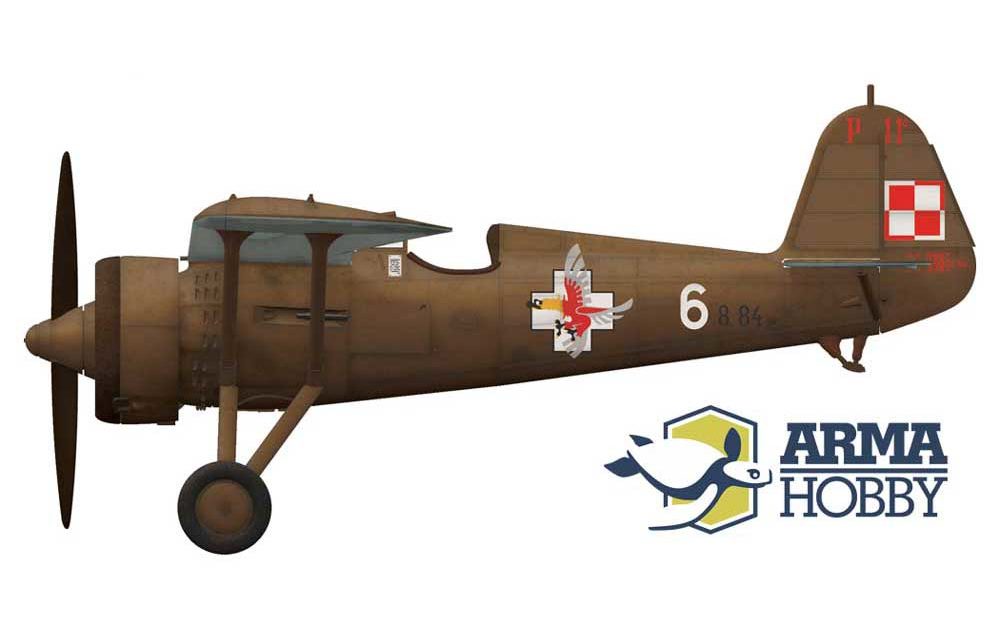

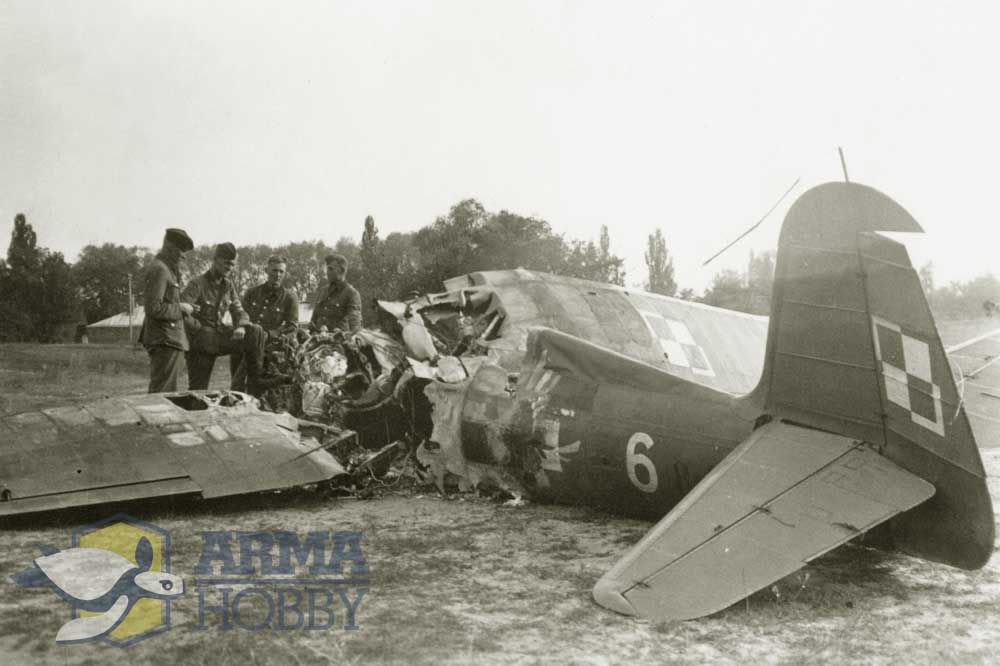

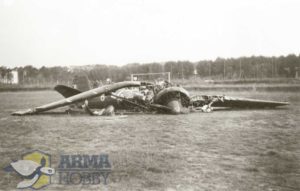
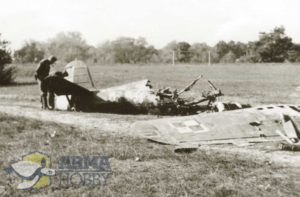

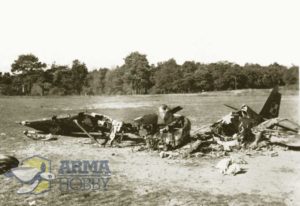



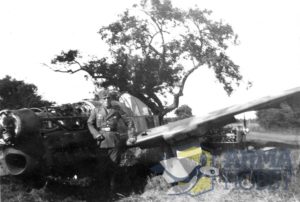
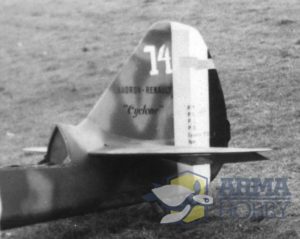
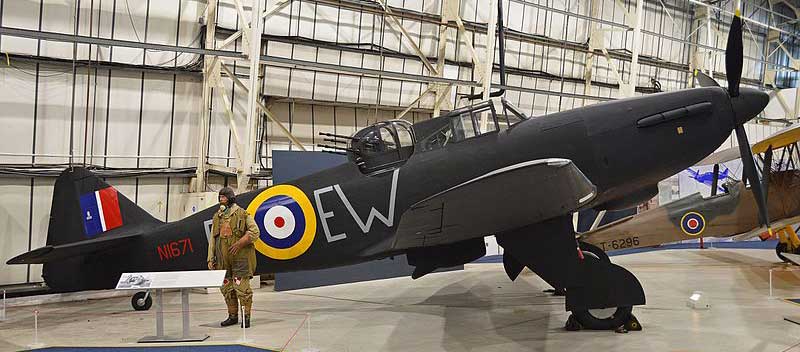

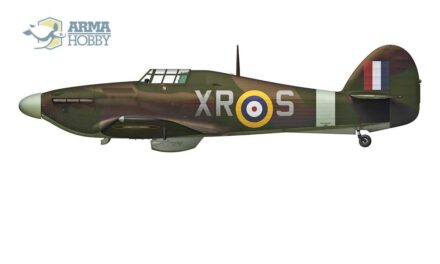

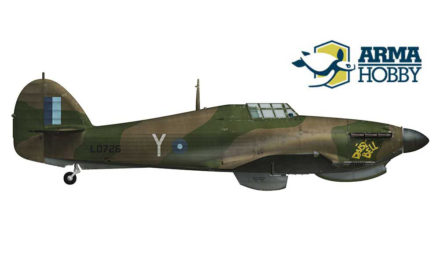
Fascinating well-researched and well-illustrated coverage – thank-you for such insight!
[…] has a very nice blog with some nice history articles that tie into their products. This one is very good. I will have to check back […]